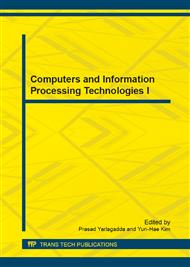p.1163
p.1168
p.1172
p.1176
p.1180
p.1184
p.1189
p.1195
p.1202
Tibetan-Chinese Named Entity Extraction Based on Comparable Corpus
Abstract:
Tibetan-Chinese named entity extraction is the foundation of cross language information processing, and provides a basis for machine translation and cross language information retrieval research. In this paper, we use the multi-language links of Wikipedia to obtain Tibetan-Chinese comparable corpus, and combine sentence length, word matching and entity boundary words together to get parallel sentence. Then we extract Tibetan-Chinese named entity from the comparable corpus in three ways: (1) Extracting Natural labeling information. (2) Acquiring the links of Tibetan entries and Chinese entries. (3) Using sequence intersection method, which includes the sentence representation, Chinese named entity recognition and corresponding Tibetan sentences intersection. Finally, the results show the extraction method based on comparable corpus is effective.
Info:
Periodical:
Pages:
1202-1205
Citation:
Online since:
June 2014
Price:
Сopyright:
© 2014 Trans Tech Publications Ltd. All Rights Reserved
Share:
Citation:


